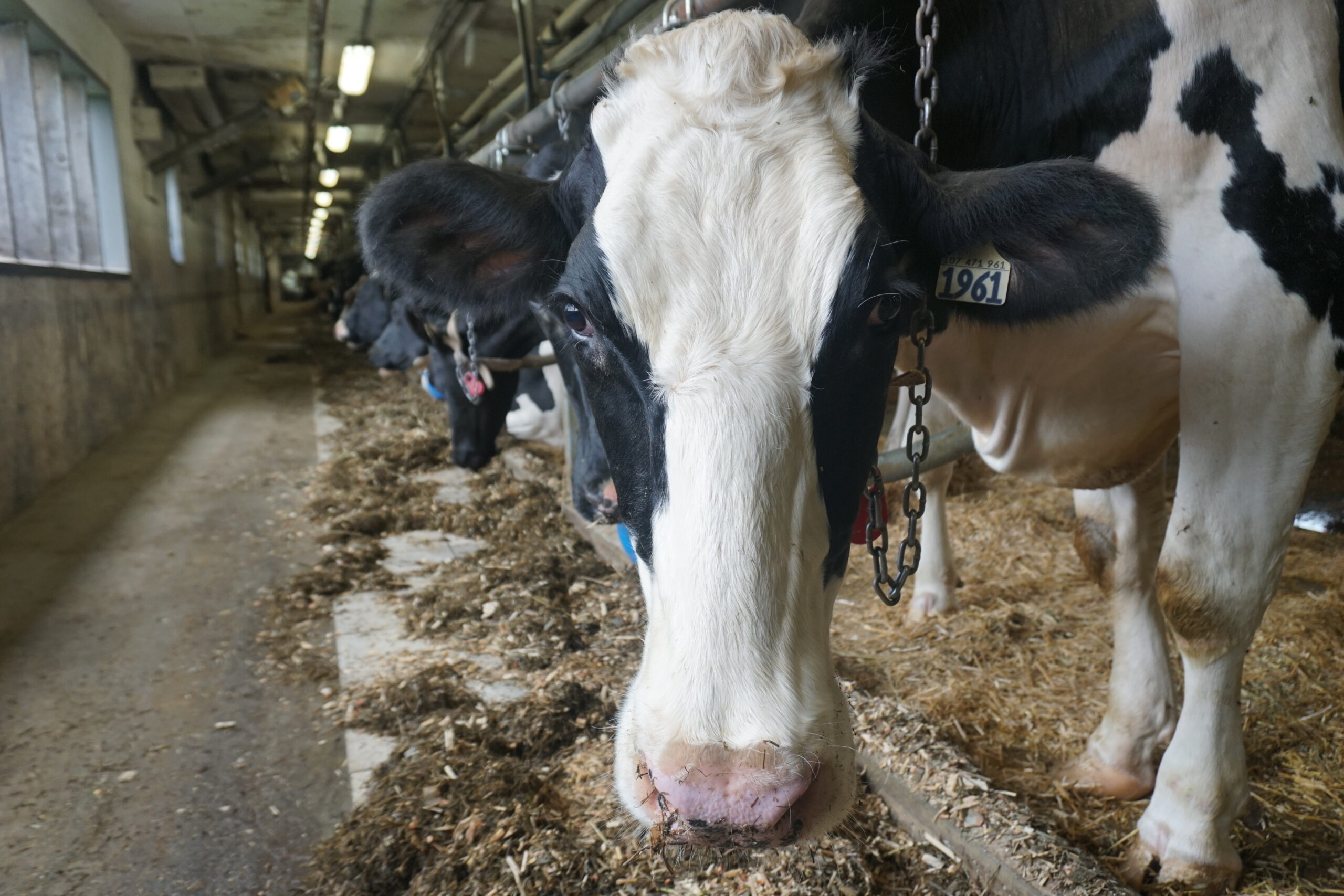Milk Bioindicators to Assess the Comfort of Cows

Project entitled:
A milk sample to predict a dairy cow’s health and welfare status?
Elsa Vasseur, Raj Duggavathi, Ashraf Ismail, Débora Santschi, Daniel LefebvreHighlights
- To date, no research carried out around the world has managed to develop a biomarker that would allow us to easily detect the health and welfare status of a dairy cow based on a simple milk sample.
- The rationale of the current research project is that:
- Research on animal welfare has led to the development of reliable behavioural indicators, ranging from clinical signs to measurements of activity.
- Blood metabolites such as NEFA and BHBA are sensitive indicators of specific health disorders, but currently no indicator has allowed one to quantify the general welfare status of animals. Moreover, the collecting and analysis of such blood indicators is often costly and technically demanding, on top of being stressful for the animals.
- The objective of this project is to develop precise indicators of dairy cow health and welfare that could be measured routinely in inexpensive and non-invasive milk samples from individual cows or from herds.
- In addition to the behavioural data collected during the experiments led by the Chair on the Sustainable Life of Dairy Cattle, physiological indicators were analyzed. These analyses identified different relationships between physiological and behavioural measurements of welfare and validated the usefulness of this new method of detecting the welfare status of dairy cows.
Objective
Developing precise biomarkers that can be recorded routinely (for example, through samples collected for milk recording) and used to detect herds and cows with a lower health and welfare level.
Results and potential benefits
This project integrates with the work being completed by the Research Chair on the Sustainable Life of Dairy Cattle , As part of the first theme of “Cow comfort and herd management,” physiological measurements were added to behavioural measurements.
Over the course of 36 months, four experiments were conducted on the Macdonald Campus Farm of McGill University. These experiments aimed to evaluate the impact of stall configuration on the comfort and movement opportunities of tie-stall dairy cows. Four aspects were evaluated:
1. position of the tie-rail; 2. chain length; 3. stall width; 4. stall length-manger wall height combination.
Behavioural measurements were collected to evaluate the cows’ ease of movement and activity. Thanks to various technologies, we can automatically collect certain data, which aids in the detection of welfare issues in tie-stall barns:
- The number and quality of lying and rising bouts, total lying time, number of steps, use of available space, etc.
Milk samples and blood samples were collected 3x/week during the first two weeks of each experiment, and 1x/week for the following 4-8 weeks. Physiological measurements were collected according to the following four secondary objectives:
1. Identify and evaluate the link between various indicators of health and welfare:
- plasma, milk and behaviour indicators;
2. Establish indicators allowing to effectively discriminate between cows with low and high levels of welfare;
- Welfare level = comfort level (ranging from low to high) provided to lactating cows in their tie-stalls;
3. Define and refine the use of these indicators (alone or in combination) on the basis of cow and environmental indicators, including:
- Improved comfort level, stage of lactation, number of parities;
4. Evaluate the potential to detect changes in the welfare status using the same type of spectroscopy as what is currently used for milk recording:
- FTIR spectroscopy.
The work and data analysis identified links between housing changes and different biomarkers analyzed by FTIR spectroscopy. These results showed that it is possible to use regularly collected milk samples to identify cows with low or high welfare levels (Bahadi et al., 2021 Foods 10(2):450). More work is needed to further refine the method to more accurately identify the impacts of specific modifications on cow welfare status.
- This is a completely new method whose effectiveness has just been demonstrated.
- This method is ground-breaking because it allows for the remote monitoring of the welfare of dairy cows in a non-invasive and inexpensive way.
Professionals trained
Behavioral Measures Component: – 4 thesis-based Master students
Sarah McPherson
Véronique Boyer
Jessica St John
The work of these students is carried out as a part of the Chair on the Sustainable Life of Dairy Cattle. The results will be shared with the following two students:
Physiological Measures Component: – 2 students
Audrey St-Yves, M.Sc. student
Mazen Bahadi, Ph.D. student
Daniel Warner, Postdoctoral fellow
For further information
- An article featuring the project can be found in the June 2017 edition of the magazine Le producteur de lait québécois
- Project supervisor’s website: mcgill.ca/animal
- Blog: cowlifemcgill.com
- Twitter account: @CowLifeMcGill
- Student presentation: Mazen Bahadi at the 2021 Novalait Forum Techno
- Bahadi M., Ismail A.A., and E. Vasseur. 2021. Fourier Transformed Infrared Spectroscopy as a Tool to Study Milk Composition Changes in Dairy Cows Attributed to Housing Modifications to Improve Animal Welfare. Foods 10 (2):450.
Financial contributions
Partnership research program of the FRQNT (Fonds de Recherche Nature et Technologies du Québec), in collaboration with:
- The Quebec consortium for the industrial bioprocess research and innovation (CRIBIQ)
- Novalait
- Valacta
Collaborative Research and Development (CRD) Grants from Natural Sciences and Engineering Research Council (NSERC).
Total budget: $261,404